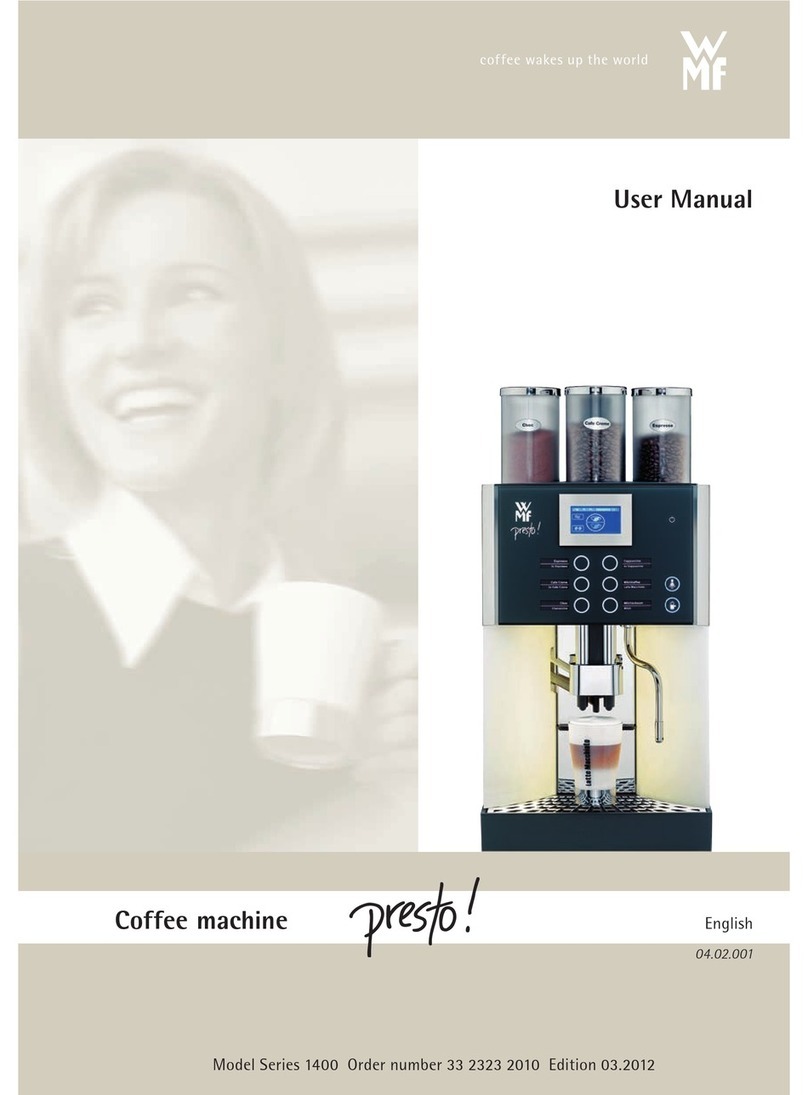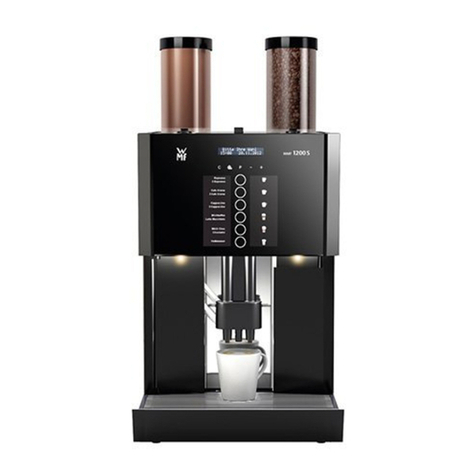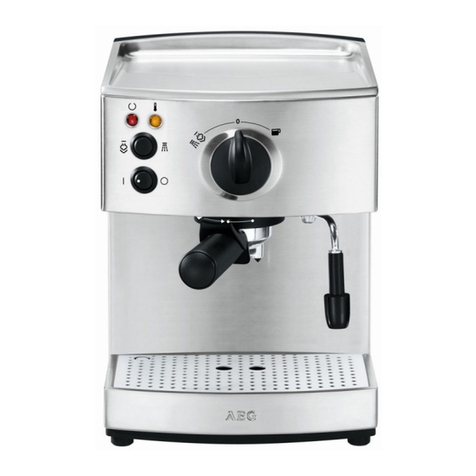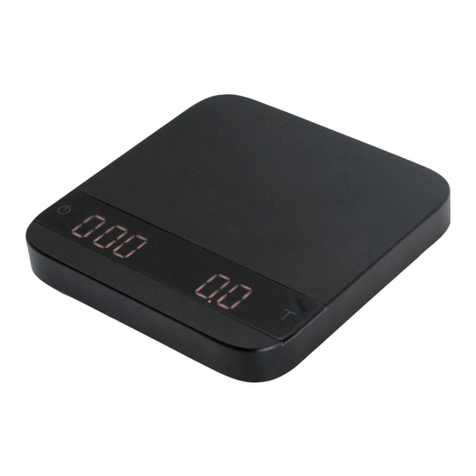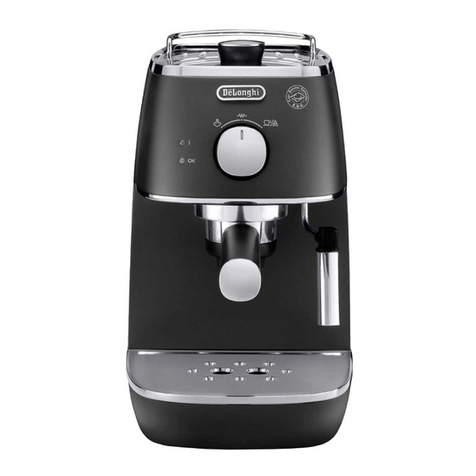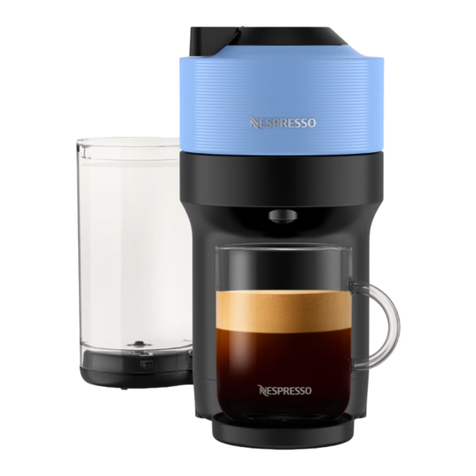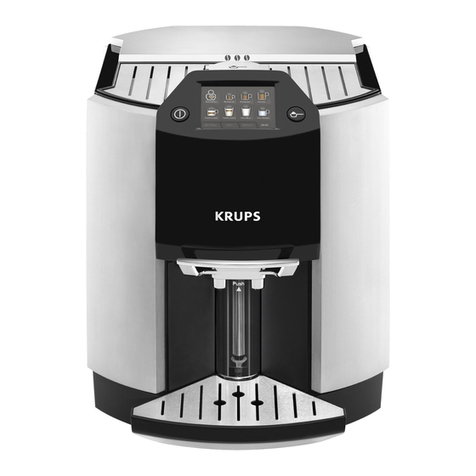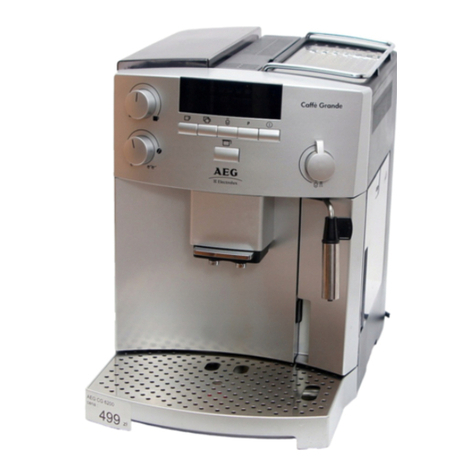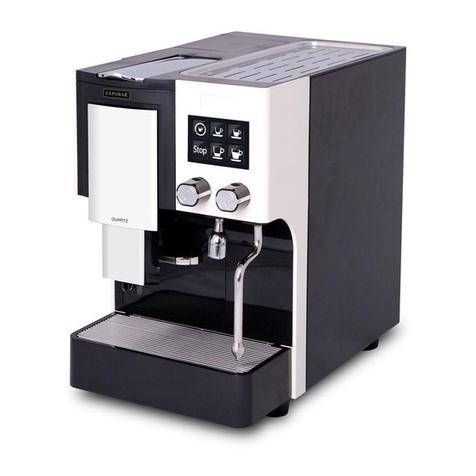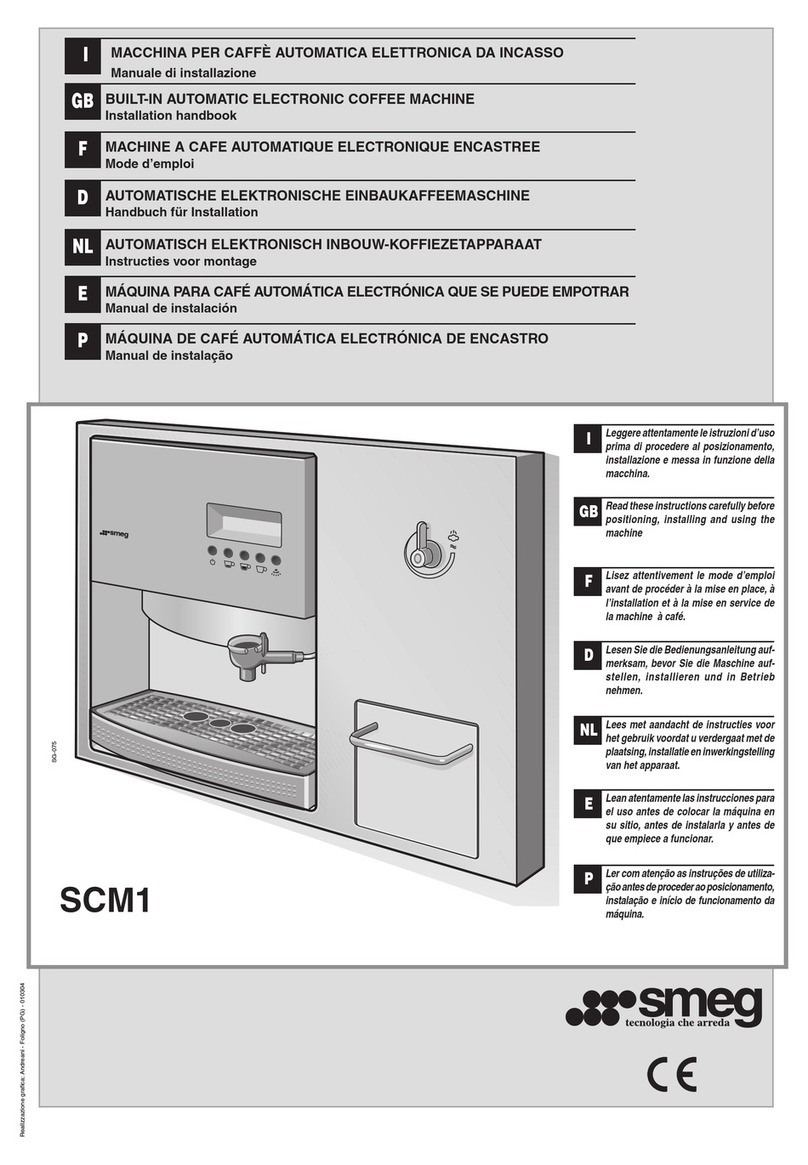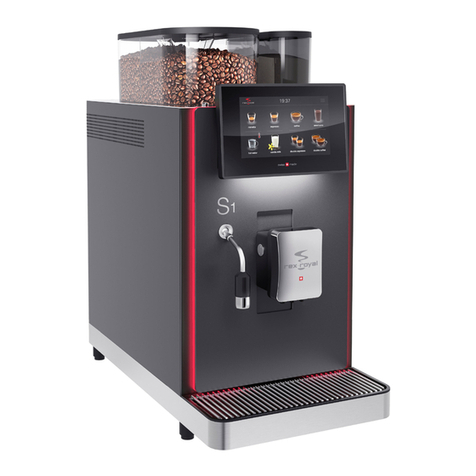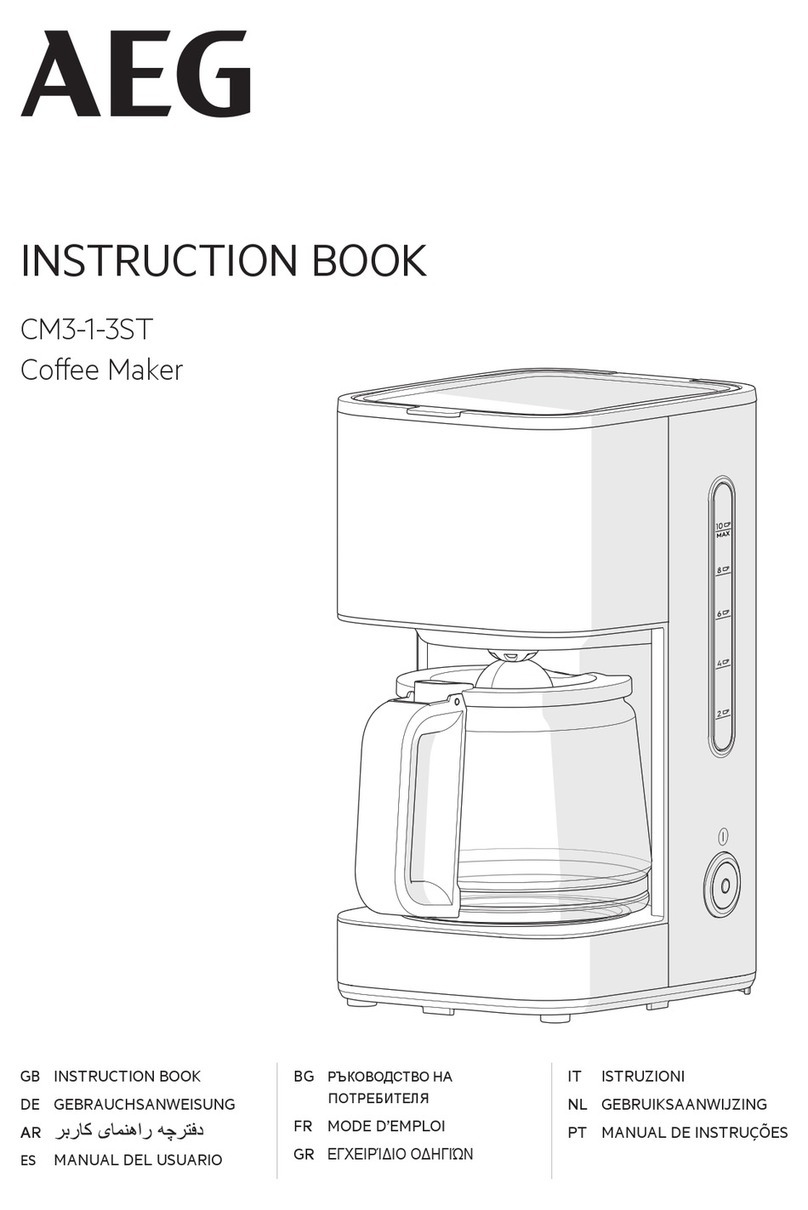MWf 1500S+ User manual

WMF 1500S+
Service manual
KSS Technical Support
Revision: 11/2020
Rev. 05

Preface 2
Preface
This Service Manual contains the most important information that is relevant to typical service and maintenance activities.
If significant changes are made, then this document, along with the referenced attachments and related documents, will be updated and provided to registered
users for download in the service center.
Attachments
WMF 1500S+ Setting instructions milk and foam
WMF 1500S+ Software description part 1
WMF 1500S+ Software description part 2
WMF 1500S+ Initial commissioning workflow
WMF 1500S+ Event and error list
WMF 1500S+ Further detailed information
WMF 1500S+ Maintenance guideline
Applicable documents
Customer documents
Planning information
User Manual
Technician documents
Piping schematics
Electrical schematics
Wiring schematics
Spare parts lists
Technical circulars
These documents are subject to change. Please try to keep these documents up-to-date.
Further detailed information are distributed in paper form as part of the face-to-face training sessions; however, they are not available for download
unrestricted.

Change history 3
Change history
Rev. 01 from 06/2018
1st edition for series launch
Rev. 02 from 07/2018
Addition to the Technician's Intro
Rev. 03 from 04/2019
Addition to the Maintenance concept, special tools
Rev. 04 from 10/2019
Addition to the Maintenance concept Dynamic Milk
Rev 05 from 11.2020
Added: "Link Video Maintenance instruction”

Table of Contents 4
Table of Contents
Preface.............................................................................................................................................................................................................................................................. 2
Change history................................................................................................................................................................................................................................................. 3
Table of Contents............................................................................................................................................................................................................................................ 4
1Installation and commissioning........................................................................................................................................................................................................ 6
1.1 Customers on-site connection requirements....................................................................................................................................................................................................................6
1.2 Hardware connection and preparatory work....................................................................................................................................................................................................................6
1.2.1 General tasks ..............................................................................................................................................................................................................................................................................6
1.2.2 Recommended water filter.....................................................................................................................................................................................................................................................7
1.3 Initial commissioning...............................................................................................................................................................................................................................................................8
1.3.1 Goal of the Technician's Intro...............................................................................................................................................................................................................................................8
1.3.2 Workflow, Technician's Intro .................................................................................................................................................................................................................................................8
2Service................................................................................................................................................................................................................................................ 12
2.1 Pressure reducer setting....................................................................................................................................................................................................................................................... 12
2.2 Grinders.....................................................................................................................................................................................................................................................................................13
2.2.1 Grinder—basic mechanical setting, grinding degree ................................................................................................................................................................................................... 14
2.2.2 Using the electric grinding degree setting for the grinder ....................................................................................................................................................................................... 14
2.2.3 Dynamic Coffee Assist advance settings......................................................................................................................................................................................................................... 15
2.3 Brewing unit with removable brew aperture ................................................................................................................................................................................................................16
2.4 Power supply ...........................................................................................................................................................................................................................................................................17
2.5 Power stage ............................................................................................................................................................................................................................................................................. 18
2.6 Front panel............................................................................................................................................................................................................................................................................... 19

Table of Contents 5
2.6.1 Replacing the front panel.................................................................................................................................................................................................................................................... 21
2.7 Power Class ..............................................................................................................................................................................................................................................................................22
3Maintenance ..................................................................................................................................................................................................................................... 23
3.1 Maintenance concept –Overview of maintenance activities...................................................................................................................................................................................23
3.2 Service / Maintenance 2 - every 2 years......................................................................................................................................................................................................................... 24
3.3 Descaling...................................................................................................................................................................................................................................................................................25
Antifreeze protection/transport preparation............................................................................................................................................................................................ 26
Special tools and aids................................................................................................................................................................................................................................... 27

Installation and commissioning 6
1Installation and commissioning
1.1 Customers on-site connection requirements
Necessary preparatory work for electricity, water and drainage connections at the customer‘s premises are to be arranged by the machine owner/operator.
The work must be carried out by authorised installation technicians in compliance with general, country-specific and local regulations.
The WMF Service engineers may only connect the coffee machine to existing prepared connection points.
WMF Service is neither authorised nor responsible for carrying out any work on-site prior to connection.
For details, see the planning information on the website www.wmf-coffeemachines.com.
Notes
-Electrically conductive counter surfaces must be earthed
-Unplug the mains plug before disconnecting the mains voltage across the cold appliance plug
1.2 Hardware connection and preparatory work
1.2.1 General tasks
Place the coffee machine horizontally on the counter (width and depth); adjust feet where adjustable
Connect the water infeed
Water filter needed? If “Yes” – connect (for details, see the following chapter)
Connect the drain –use angle 33 2165 8000 from horizontal to vertical!

Installation and commissioning 7
Example, Dynamic Milk: all drains must be sloped.
Attach the drain tube and rinse hose to the connection angle using cable ties
Caution
To prevent back-contamination, the hoses MUST NOT make contact with the wastewater.
Two position arrows are inscribed on the elbow connector for reference.
Connect to the power supply
Switch on the coffee machine
1.2.2 Recommended water filter
When the carbonate hardness is above 5 °dKH, a WMF water filter should be installed.
For the WMF 1500S+, –bestmax M –is recommended in the standard in the retail price list.
After measuring the carbonate hardness with a test kit - which is within the sell-by date - cut to size according to the capacity table
(see the User Manual which comes with the filter).

Installation and commissioning 8
1.3 Initial commissioning
1.3.1 Goal of the Technician's Intro
A guided implementation of mandatory basic settings.
As simple a start-up of the coffee machine as possible with a high-quality beverage quality.
The aim is not to cover all setting options.
If for example the settings stored as defaults are changed in the "Operating options" menu or if the position of beverage buttons is changed, cup volumes are to
be changed, this must take place after the intro has concluded.
1.3.2 Workflow, Technician's Intro
Set and adjust the time zone as necessary.
Set automatic summer/winter time.

Installation and commissioning 9
Set and where necessary change the language.
Adjust time and date where necessary.
The prompt appears asking whether to carry out start-up or not.
When Yes: Next step
When No: Machine is filled then heat and is then ready for use

Installation and commissioning 10
Enter the technician PIN.
(Since some access to service menus is provided as part of the technician intro; it is used to ensure that only
technicians use the start-up intro.)
A pure information text page follows.
In this way, the setting steps to be performed are explained in detail.

Installation and commissioning 11
Adjust the machine configuration.
After processing and confirmation, a restart will be required.
The menu items are intended –as they partly build on top of each another- to be processed from top to bottom.
(The cooler is only present when it was previously selected in the machine configuration).
Menu items which were run through and processed are marked with a check.
The OK button appears once all menu items have been processed.
A concluding information text page appears.

Service 12
2Service
2.1 Pressure reducer setting
Pressure reducer setting: 1.5 bar (+0.4/-0.3 bar) flow pressure
Instructions:
The safety assembly complete is used as the spare part –33 2822 7499.
The pressure reducer setting can remain as it is.
Checking and setting:
Open the ‘Pressure reducer setting’ service routine
Under Service > Service routines > Adjust pressure reducer
-Remove fitting bolt from water tank connection and screw in auxiliary nipple
-Mount testing tool with 0.7 mm aperture on auxiliary nipple (see illustration)
Start service routines
-The feed valve opens (water is discharged through the adjustment valve)
-the pressure is indicated on the test pressure gage
Set pressure reducer using the adjustment screw if needed
End the service routine, remove the test fitting and reinstall the fitting bolt

Service 13
2.2 Grinders
Right grinder
The right grinder (33 7006 4704) is preset to grinding degree 1, espresso grind.
This corresponds to a discharge rate of about 2.2 g/s, and a grain size distribution of about 470 μm.
Left and center grinder
The center-left grinder (33 7006 4703) is preset to grinding degree 5, crème grind.
This corresponds to a discharge rate of about 2.6 g/s, and a grain size distribution of about 640 μm.
Instructions:
Reset the grinder counter whenever the grinder disks or grinder are replaced.
Service > Service date > Grinder 1 grinder disks / Grinder 2 grinder disks > Confirm maintenance

Service 14
2.2.1 Grinder—basic mechanical setting, grinding degree
1. This setting is made with the grinder completely empty, without the adjustment motor, outside of the machine
2. Turn the disks together with the crown gear assembled until the disks are seated together and can no longer be turned on the drive shaft
by hand.
3. Basic setting “Grinder degree setting”
The seam on the grinder discharge can be used as an aid for orientation; see illustration
A rotation by 10 teeth is equivalent to grinding degree 1 –espresso grind
A rotation by 18 teeth is equivalent to grinding degree 5 - crème grind
2.2.2 Using the electric grinding degree setting for the grinder
1. Install the adjusting motor and place the grinder in the machine
2. Set the grinding degree under Service > Machine data > Enter grinding degree setting
The software restricts the setting range preventing
3. If needed, adjust the grinding degree under System > Grinding degree setting > Grinding degree, grinder 1 / Grinding degree, grinder 2
4. Perform portioner calibration

Service 15
2.2.3 Dynamic Coffee Assist advance settings
With Dynamic Coffee Assist, beverages with espresso can be monitored and adjusted automatically. The brewing flow must be set to 3 –5 ml/s for this.
Illustration shows the espresso component of the latte macchiato as an example.
1. Double espresso setting
1.1. Set default setting for Q level to Q4 and use grinding degree adjustment to set grinding degree to 1
1.2. 3 Remove the test beverages and adjust the grinding degree from the grinding degree setting until reaching a brew flow of 3-5 ml/s
Use the Information button to see the brewing flow
1.3. If the brew flow cannot be reached, adjust the wet-pressing value slightly and re-test
1.4. Save beverage
2. Perform portioner calibration for the espresso grinder
3. Check the double espresso again–if necessary, correct the wet-pressing value or quality level
4. Single espresso setting
4.1. Change default setting for the Q level to Q6
4.2. Remove 3 test drinks and adjust the wet pressing force until reaching a brew flow of 3-5 ml/s
4.3. Save beverage
5. Apply the single and double espresso settings to beverages with espresso content

Service 16
2.3 Brewing unit with removable brew aperture
Using the brewing unit with aperture –33 2893 0399
WMF 1500S+; WMF 1100S, WMF 1200S, presto
The previous dark-red brewing unit is used in the version for the USA
Using the brewing unit without aperture –33 2893 0499
WMF 1500S+ with FFC
The brewing unit can be differentiated from the previous brewing unit (dark red) by its new housing color (brown).
The difference is that the brown brewing unit does not have a switch cam for the brewer end switch and the powder chute is included as a spare part and must be
installed.
When performing repairs, spare parts from the brown and dark red brewing units MUST NOT be combined!
The brew aperture is installed in the top brewing piston, between the brewing sieve and the discharge
nozzle. It can be removed or replaced for cleaning purposes.
If cleaning or warm-up rinsing is performed while the brew aperture is removed, sediment that has
collected behind the brewing sieve can be flushed out, thus preventing flow errors.

Service 17
2.4 Power supply
Using the power supply –33 2628 3100
WMF 1500S+; WMF 5000S+, WMF 9000S+; WMF 9000F
Notes:
oThe spare part power supply 154C does NOT have a mounting bracket
oJumper J4 is correctly placed across pins 2 and 3.
Important: If the jumper is incorrectly placed on 1 and 2, then the machine can no longer be switched off
The power supply can be run at either 115 V (jumper plugged in at J5) or 230 V input voltage. It converts an unstabilized input voltage into stabilized 5 V, 24 V,
and 30 V DC voltages.
When the machine is switched on using the On/off button, the DC voltages are provided by the power supply.
In case of a error, such as overcurrent or short circuit, the power supply cuts off to protect itself and the power stage.
> If an error is detected 6 times within one minute, then the power supply shuts off and can be reset only by briefly disconnecting the entire machine from the
grid.
The power supply is generally set to 154C on the software side.
USA machine versions are an exception. These MUST be set to 154C-US in order to comply with the law in the USA. The setting results in someone poorer
dispensing consistency for milk foam quality in the Dynamic Milk model.

Service 18
2.5 Power stage
Using the spare power stage –33 4099 0099
WMF 1500S+; WMF 5000S+, WMF 9000S+; WMF 9000F, Syrup accessory equipment
All inputs and outputs are located on the power stage.
The power stage is protected against overcurrent and short circuits by 10 current sensors and a current detector.
The outputs for controlling the brewer motor are non-locking.
This means that these outputs are normally protected. Only a direct short circuit can damage the outputs.
All other outputs are short circuit-resistant. The outputs are not damaged even in the event of short circuit.

Service 19
2.6 Front panel
Using the front panel platform –33 4126 0099
WMF 1500S+; WMF 5000S+, WMF 9000F
The following components are integrated in the front panel platform
-CPU
-10-inch display with sensor glass and capacitive touch
-Micro-SD Card
-Ethernet connection
-2 USB connections
-Generally lockable
The micro-SD card stores all data.
-With a software update, the new machine software and operating system software are stored on the Micro-SD card
-Every day, after switch on, a complete data back-up to the micro SD card is performed.
Beverage settings, counters, maintenance data secured.

Service 20
A platform front panel can be used universally with all of the machine types listed. Front panel that have already been in use can also be reused.
Using the Panel Updater (an auxiliary program found on the front panel) and an inserted USB stick with appropriate machine software, the platform front panel is
programmed to make a machine-specific spare parts front panel with serial number #100.
There is then an opportunity, as has always been the case, to use the microSD card from the defective front panel and restore all of the data completely.
Using
Service
> Service routines
> Panel updater
> History
-> the history of the front panel can be viewed here
> Start panel updater
-> this starts the Panel updater
If the Panel Updater can no longer be started by means of the machine software, then there is also the option of starting it via the USB stick.
To do so, place a text file named “reset.txt” on the USB stick, insert it in the front panel, and switch on the machine.
Table of contents
Other MWf Coffee Maker manuals
Popular Coffee Maker manuals by other brands
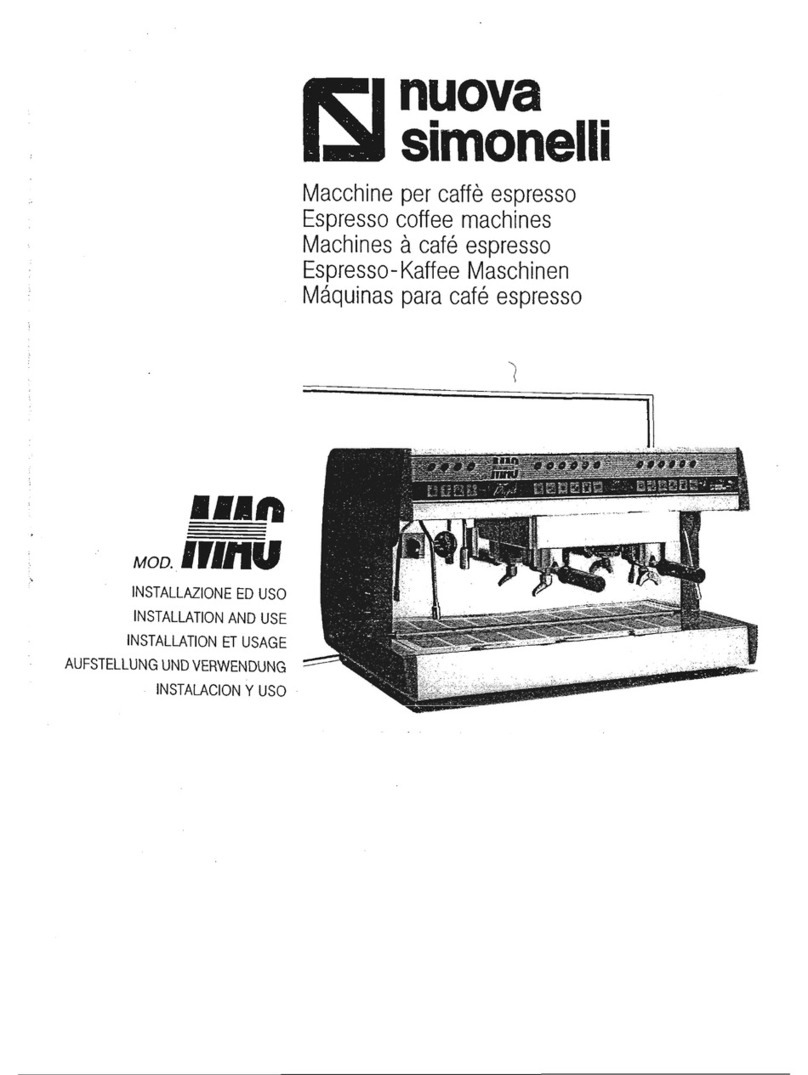
Nuova Simonelli
Nuova Simonelli MAC Installation and use

knIndustrie
knIndustrie Lady Anne instructions
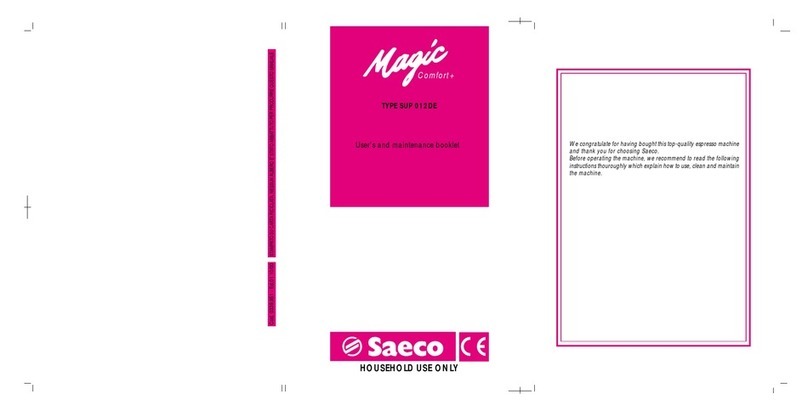
Saeco
Saeco magic comfort+ sup 012DE User and maintenance manual

Zanussi
Zanussi Built-In Coffee Machine brochure
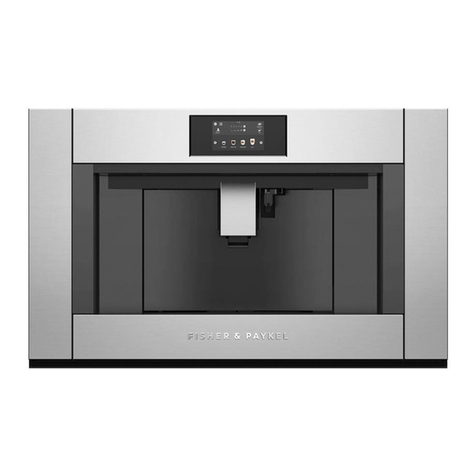
Fisher & Paykel
Fisher & Paykel PROFESSIONAL EB30PSX1 Troubleshooting
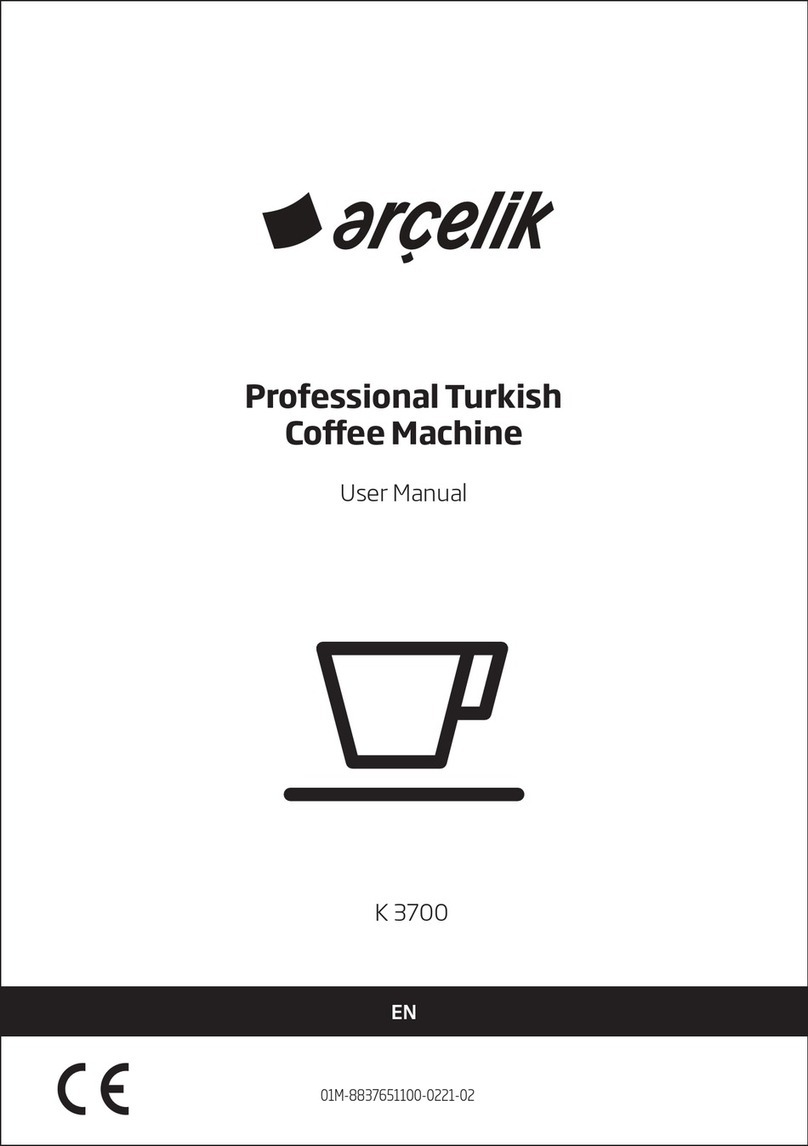
arcelik
arcelik K 3700 user manual
